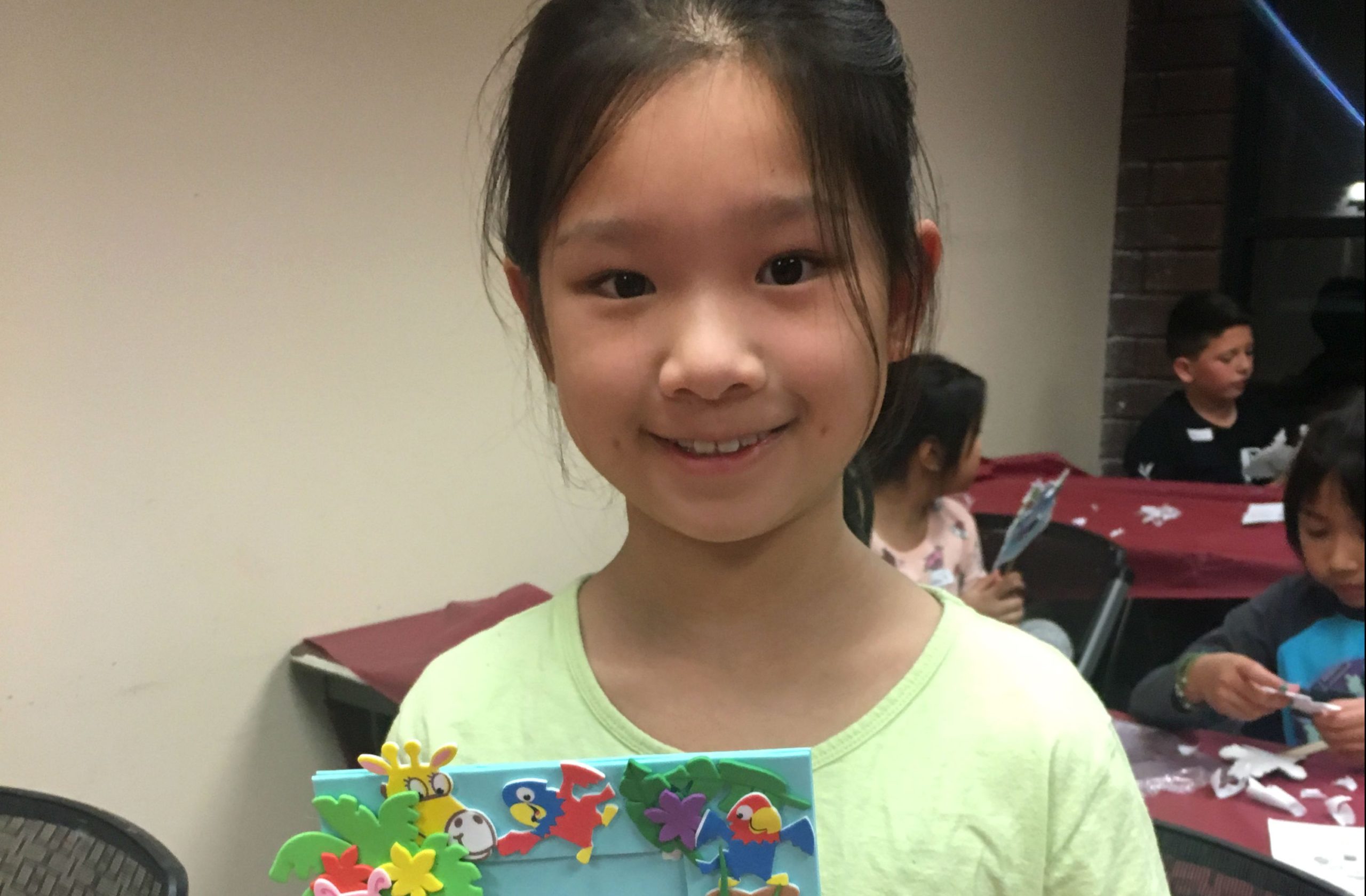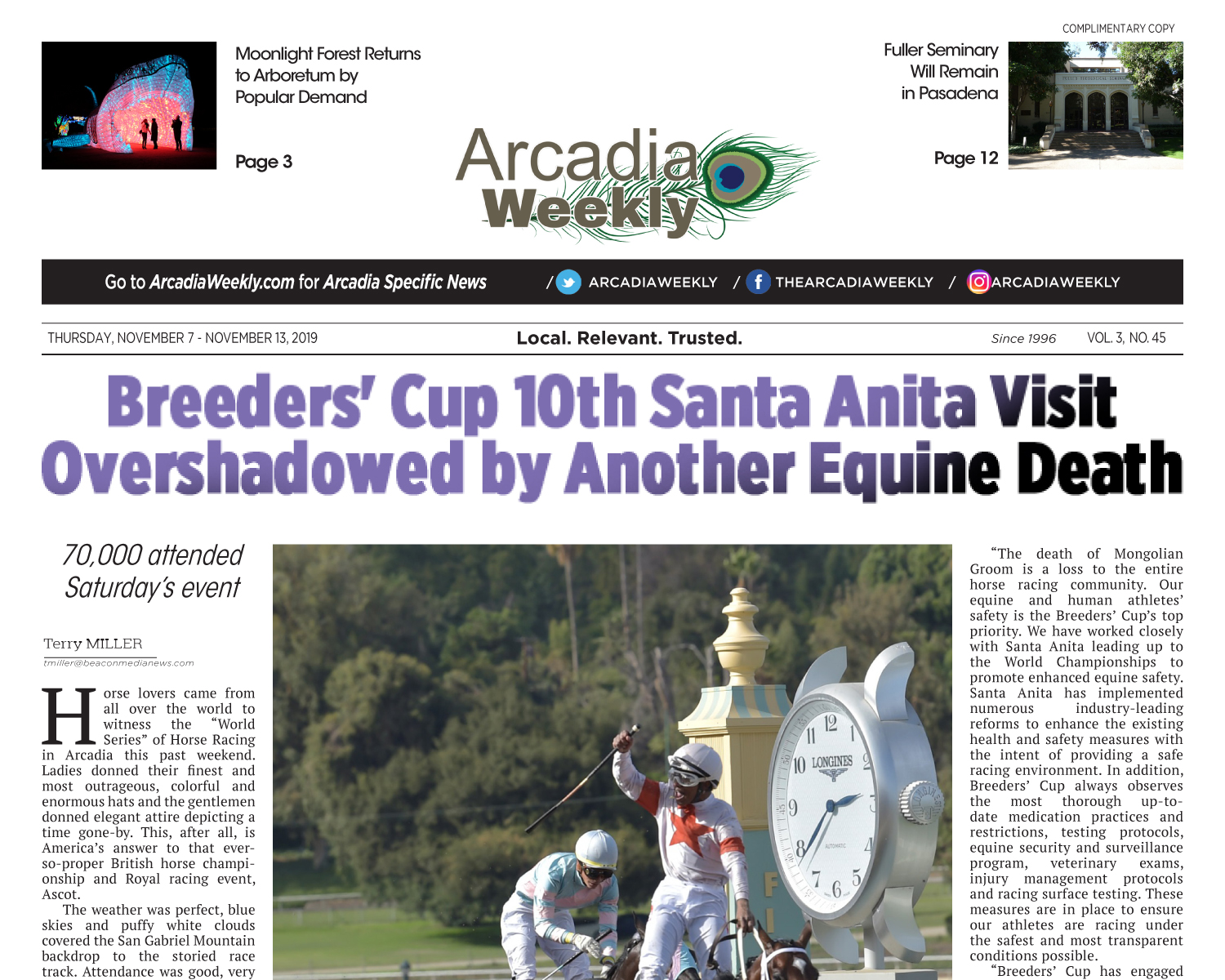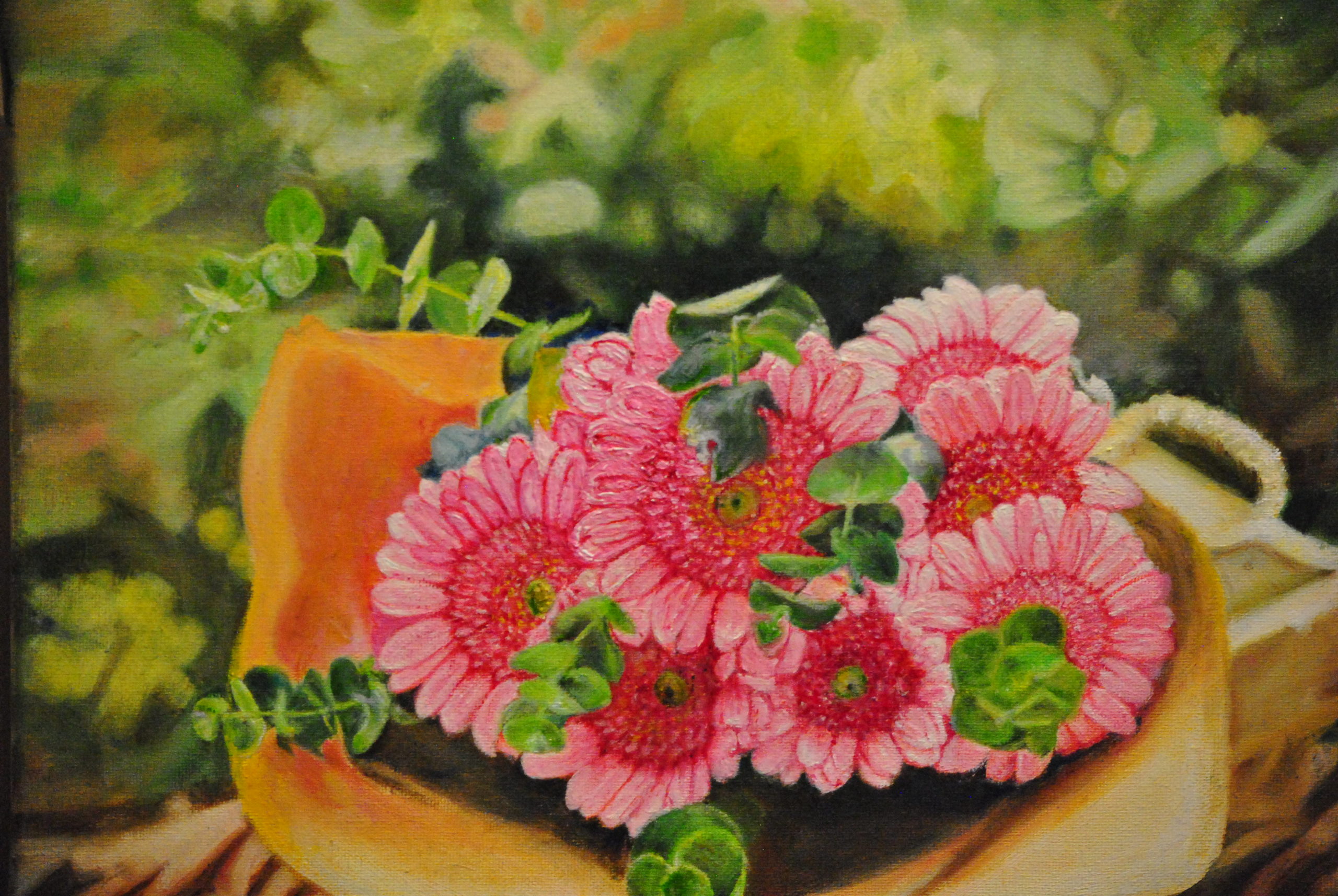
By Galen Patterson
The Gilb Museum in Arcadia opened a new art exhibit to the public on Nov. 2. The exhibit features art from local artists that have studied under artist KT Boyce. This is Boyce’s third class exhibit at the Gilb.
Her students come from different skill levels, from the more familiar to the absolute first time painters. At the opening day reception, the artists casually mingled and admired each other’s work as the public viewed them for the first time.
Artist Nick Salazar sat contentedly on a bench next to his wife on the back patio of the museum. Salazar submitted his third painting, which he created two years earlier when he first began learning to paint from Boyce.

Back then, Salazar’s wife had found a striking picture of flowers surrounding an old mission in a travel magazine. According to Salazar she said “I wish you’d paint that for me, so I did.”
The finished product is titled Mission Spring Flowers and is distinctly colorful while contrasting the sharp brush strokes of the rows of multi-colored flowers against the soft, fluffy clouds. The shapes display a level of skill difficult to believe was achieved on the third painting of an artist’s career.

At the show, someone offered Salazar money to buy the painting. Neither he nor his wife is willing to sell it.
Adjacent to Mission Spring Flowers is Two Birds In Love by Adolf Torres.
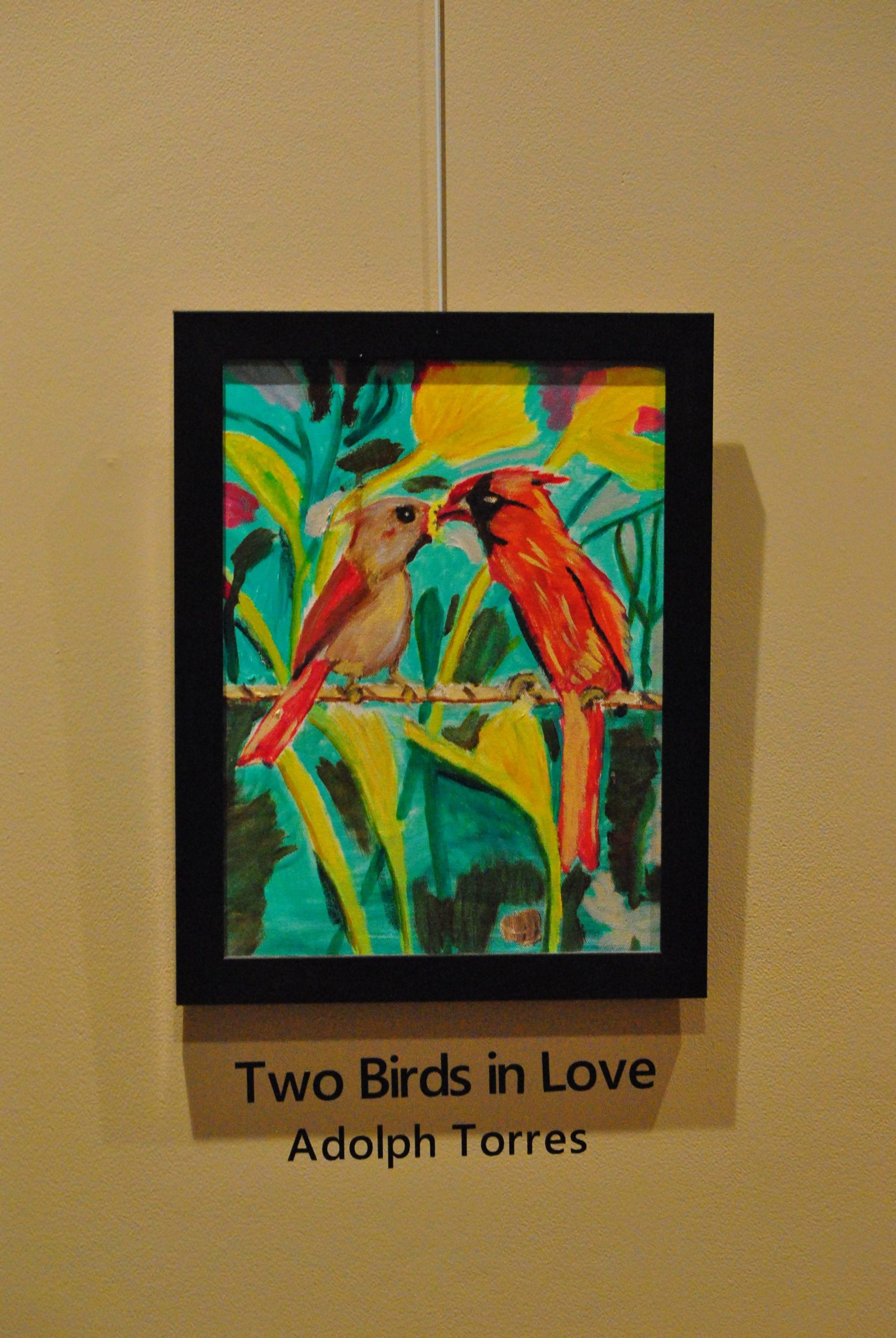
Torres is a long-time student turned family friend of Boyce. He’s deaf and relies on his wife to help interpret conversation in noisy environments. Torres’ deafness was sudden and caused him to lose his driving ability, which nearly ended his participation in Boyce’s class, but Boyce offered to drive him if he would stay in the class. Torres agreed.
Two Birds in Love is also colorful and vibrant. It portrays male and female cardinals sitting on a branch together. Torres says they represent him and his wife.
On the opposite wall hangs a wonderfully detailed picture of a Japanese garden called Kyoto Temple by Lin T. Fun.
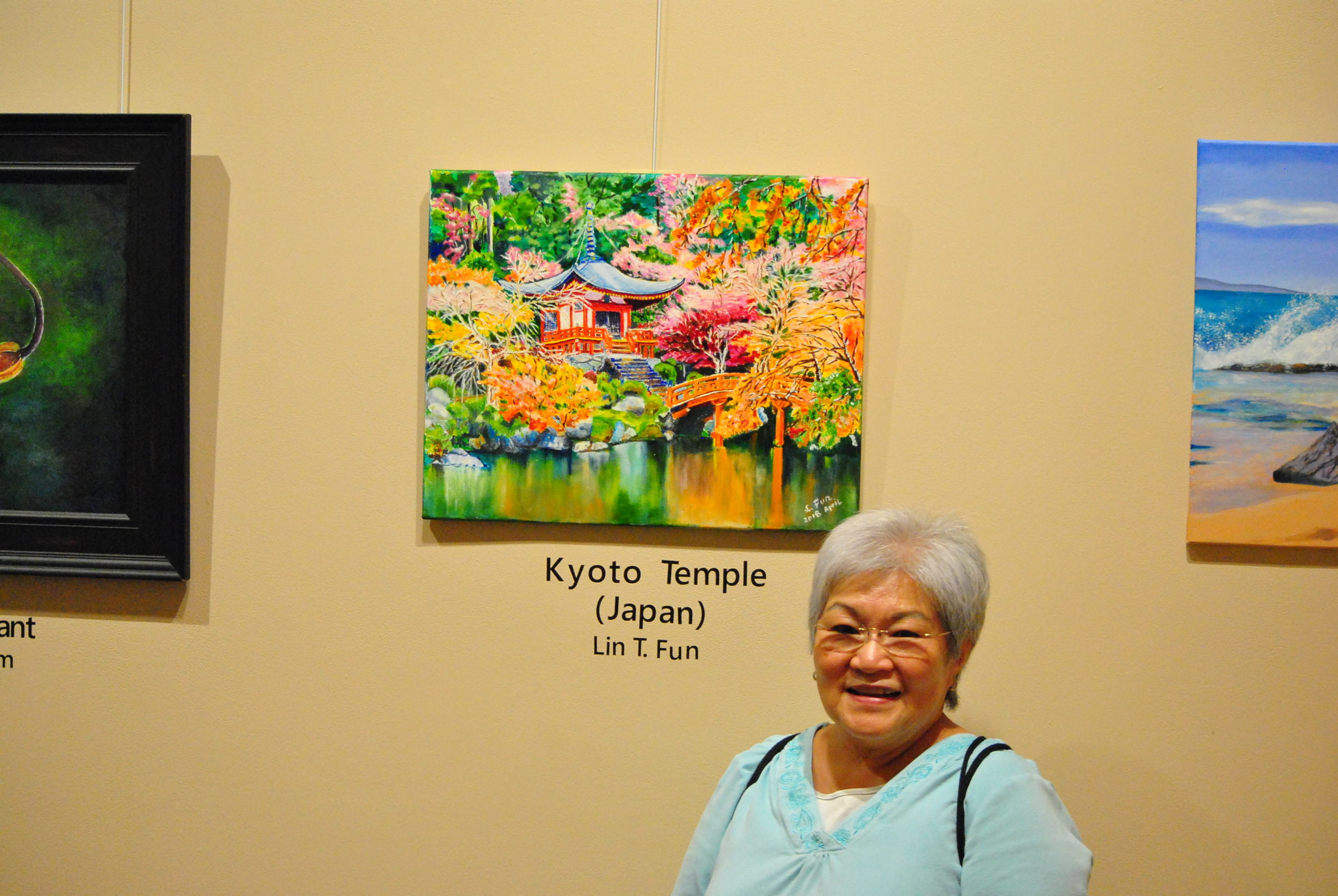
Fun originally came from Taiwan, but immigrated to Brazil early in life. She now lives in the San Gabriel Valley.
Her inspiration came from wanting to explore her Asian heritage, but also different cultures incorporated into Asia. For this painting, she wanted to show the transition of color between summer and fall. Her painting depicts the verdant greens of summer giving way to the color change and death of the leaves brought on by seasonal change. The result is an incredibly detailed work of art that she is happy with.
Like Salazar, Fun tends not to sell paintings but instead gives them away or keeps them in her room at home.
On the nearby wall hangs a curiously eye-catching painting called Ardi Welcomes the Ancient Aliens.
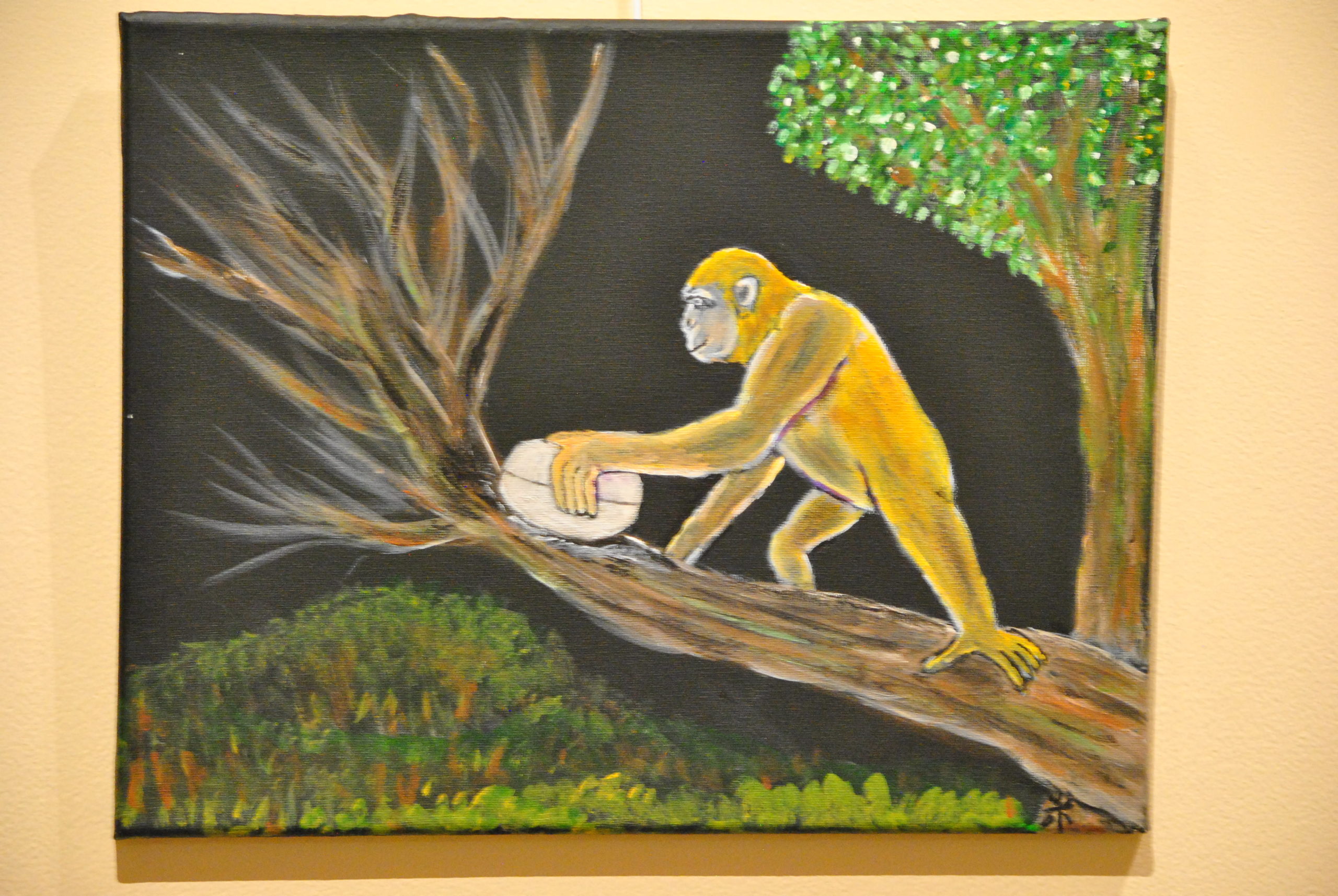
It depicts Ardipithecus, an early ancestor of humans considered to be the lineage of apes where the distinct features of human began to separate from the primate element of the animal kingdom.
Artist Kenn Miller explains that the painting is a satirical possibility of the early human ancestor finding a shiny thing in a tree, which is symbolic of alien technology and would therefore create the genetic changes that caused humanity to rise from the lineage.
He laughs and jokes about his painting and says things like “gorillas are much better humans than we are.”
Miller was a soldier in Vietnam, who then studied languages and anthropology and eventually became a teacher of different subjects including English and physical education. He also worked as an interpreter for the public school system because of his ability to speak Mandarin and dialects of Taiwanese.
“I go [to Boyce’s class] to paint a little bit but mostly I just go and watch everybody else,” he said. Miller says there’s no pressure and he can let his imagination run.

Boyce says many of her students take several of her classes across the San Gabriel Valley and some will visit Laguna Beach where her own art is displayed in a gallery.
She holds classes in Arcadia on Thursdays from 9 to 11 a.m. and Saturdays from 1:30-3:30 p.m.

